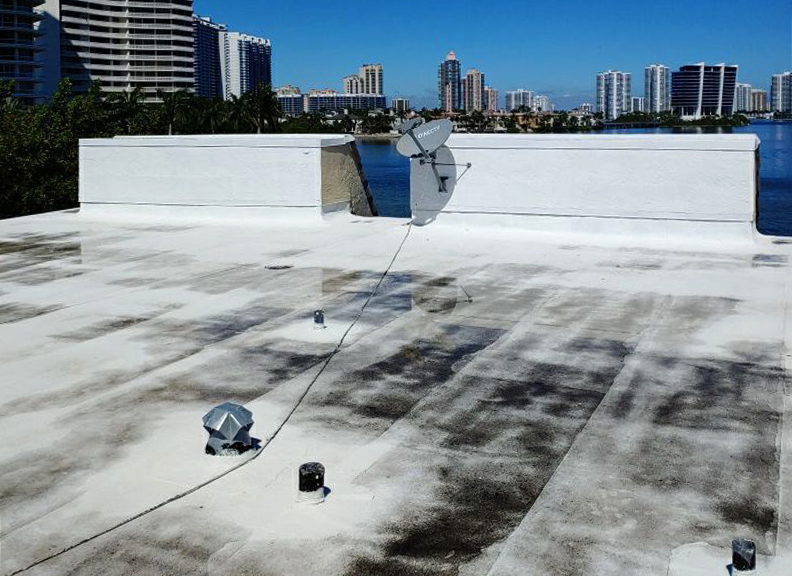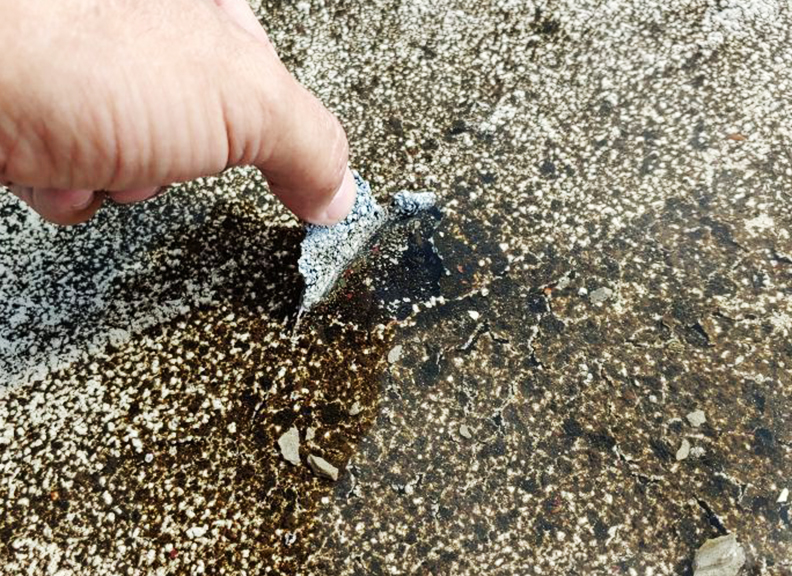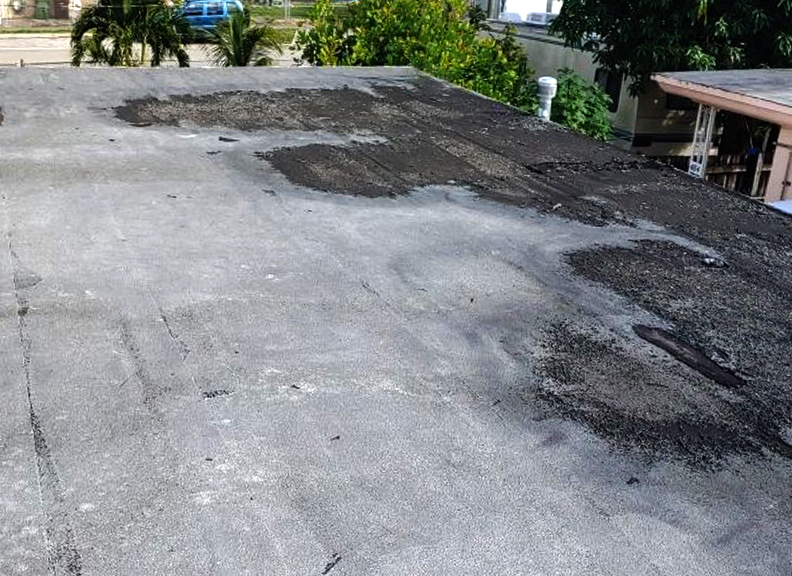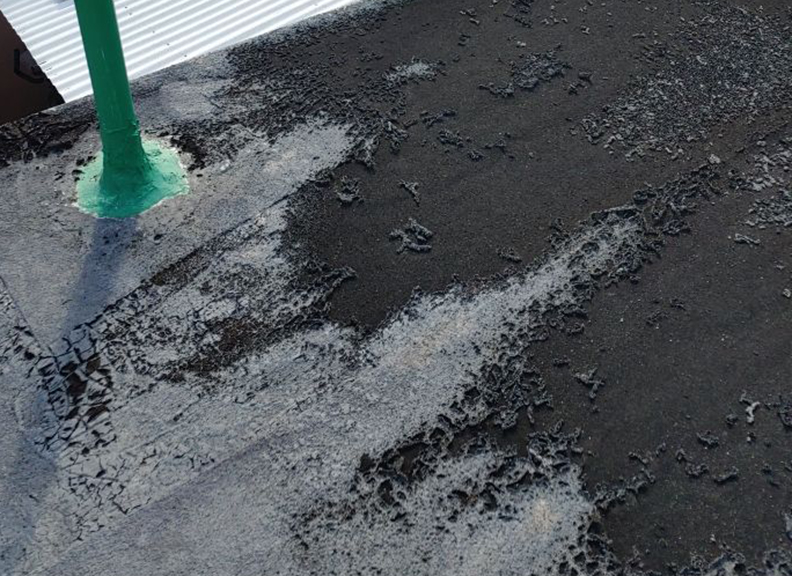Flat Roof Ponding Water
Flat Roof Ponding Water Solution by Stone House Roofing
Flat roofs are widely seen in North America, mainly on warehouses and other commercial buildings. They’re also very common on residential, covering porches, terraces and additions. It doesn’t matter where or which material used to waterproof a flat roof, they usually have a common problem: ponding water areas. We at Stone House Roofing wanted to talk about the importance of fixing ponding water to prevent future roof failure.
If you live in Cutler Bay & Homestead in Miami-Dade, flat roof ponding water is a very common problem. In order to effectively drain water, flat roofs must be sloped at least ¼” in 12”. In new constructions, it is easy to comply with this requirement but sometimes reality is different when you have to re-roof. Because it rains constantly in Cutler Bay & Homestead, flat roofs can deteriorate faster than other places.
Samples of ponding water damage




Must roof systems are not designed to hold ponding water. They are designed to positively drain water off the roof. Ponding water should not stay for more than 48 hours on your roof. When that happens flat roofs start failing around penetrations, flashing and seams. The only system that performs well holding ponding water is silicone coating because of silicon properties, but it is not exempt from other problems like dirt attraction.
The first thing to do is to define what is creating ponding the water on your roof. Here are some possible problems and how to solve them:
1- Structure failure: Trusses or beams could be failing and that can create a deck depression. In that case the solution is to replace all damaged structure to return the wood deck back to its original position.
2- Damaged wood or plywood: Plywood damaged by water usually becomes more flexible and starts bending by water weight. The solution is to replace all damage plywood.
3- The roof is completely flat: In this case the best solution, which is not the least expensive, is to create hips and valleys using tapered insulation. This is a great solution because you are not just going to drain all the water off your roof, but you are also going to lower the room temperature considerably which is a plus when you live in Miami-Dade, South Florida. Another less expensive solution you have is to apply a top layer of silicone coating that will hold ponding water. This will extend the life of the roof for another 10 to 15 years. But to be applied, the deck and the existing roof must be completely dry and ponding water can’t be a weight threat to the roof structure.
Self-leveling Lightweight Concrete is another solution. This is usually used when there is no Structure Failure and there is a relatively small area to cover. The contractor has to make sure that adding weight won’t create a future failure problem to the roof.
As you see, there are many reasons why there is ponding water on your roof. Let a professional identify ponding water cause. For example, if there is beam or truss failure and you add yourself a self-leveling concrete to correct the depression, you will be adding more weight to the structure and make it more likely to fail. We at Stone House Roofing can inspect your roof to identify the problem that is causing ponding water and let you know the best way to fix it.
Stone House Roofing is a Florida State Certified roofing company operating in the area of Cutler Bay & Homestead in Miami County. Call us at 305.239.8838 for a free estimate.
